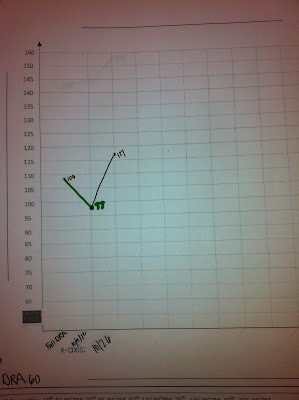Do any of you ever devote your time to mentoring a student teacher? I guess the fancy way to refer to them is "intern", but 'round these parts they don't get paid, and for some reason I have the connotation of a paycheck attached to that word, so student teacher it is!
Our lovely Ms. J started her two weeks of solo teaching today. WAH! I am kicked-out of the room!
I always see the time I am away from my kiddos as a chance to catch up on some curriculum design, and as you know from my previous post, I have had plenty of opportunities to re-think the way I do things this year. At my school we have talked about Interactive Writing, Achieve 3000, RTI implementation, Oklahoma's new Common Core Standard Adoption, and have revamped how we use our professional time by adding PLCs (Professional Learning Communities). My problem has been not being able to get much done in the classroom since I have been allowing Ms. J to take the lead in most instruction in preparation of being fully in-charge.
We had another thing added to our plates at our PLC meetings on Friday. Although my plate is already as full as my Chinet on Thanksgiving, I was happy about the prospect of actually being able to tackle this one. The Director of Literacy in our district came to talk with us. Much of what we ended up discussing had to do with writing, rubrics, and how our fifth graders will be expected to perform on the State Writing test this year.
 |
| This plate is empty compared to mine! No really, my Thanksgiving plate is shamefully fuller. |
\
In the past, prompts have been given that the students would have to write to. What is your favorite movie?-type prompts have been common in the past. Not that I ever looked! No, no, no. I would never do that!
Now, the kiddos will be reading two or possibly three texts and then responding to them. They could be asked to write in any of the three modes: persuasive, informative, or narrative. They will also be asked to use evidence from the texts to support their writing.
The problem we run into is time. Isn't it always!?
Our district uses the reading series, Treasures, by McGraw Hill/Macmillan. Does anyone else out there use this series? Well, we use it with "fidelity" which means we are already booked-up and need a creative way to incorporate the reading/writing across texts that the kids need to be able to do, into the reading series we use.
My plan is to write prompts that ask the students to write across the two or three weekly selections that we already read each week. Some weeks there is a question included in the "Think and Compare" at the end of main selection, but often the prompt is weak and/or not included at all.
Here is my logic for using our reading series passages:
1. This way they will be using a text that is already familiar to them, which I think would be beneficial, since ideally we will be practicing and using Interactive Writing as we begin our work.
2. I won't need to pull additional articles and stories.
3. The kids already have the textbook in their desks.
4. It will deepen their understanding of the stories we already read and make our discussions richer.
5. We won't have to cram one or two more texts into an already jam-packed week.
6. We can use the students' work as a basis for reviewing the testing rubric.
The thing I really like about the "new" way is that is really asks the kids to think about what they are reading and back it up with evidence. They will be asked to support their reasons with evidence for the rest of their lives! I don't remotely feel as if I am "teaching to the test" on this, since I know the skill they are being tested on will be so valuable to them.
I ramble. I'm sorry. It always seems more simple in my mind. Maybe I need to practice organizing my writing with my kids!
So, as I get the prompts all typed up, I will post a link to them on TeachersPayTeachers.
What do you do to incorporate writing practice that meets Common Core Standards?
*Hug, Handshake, Highfive,
Brandi






.JPG)
